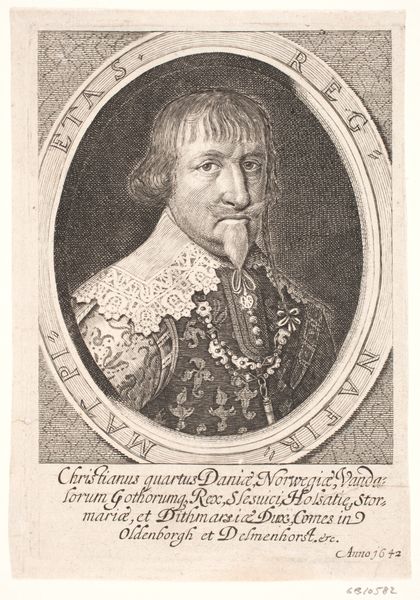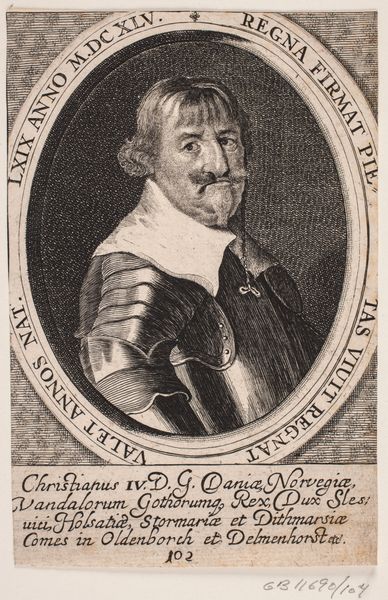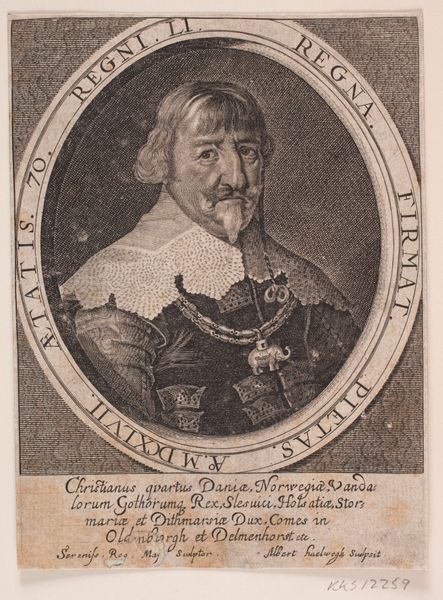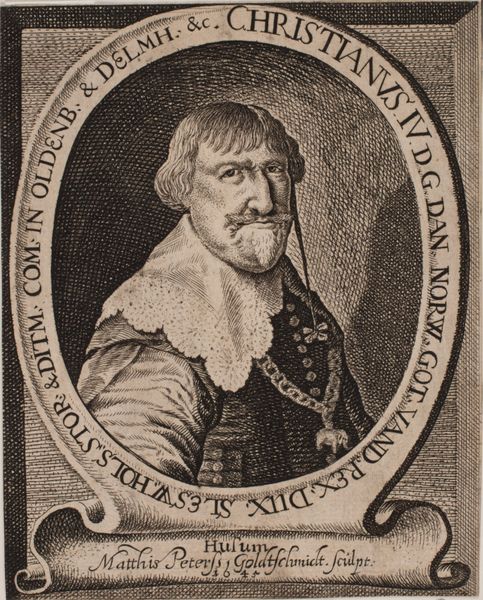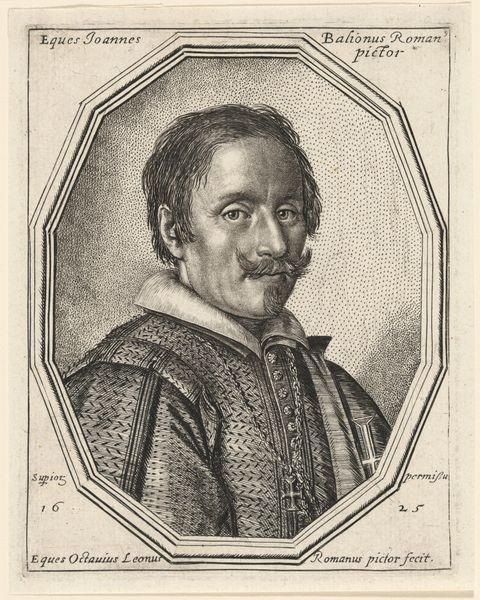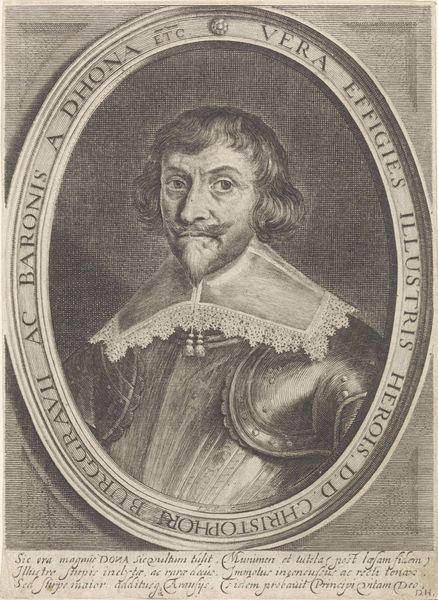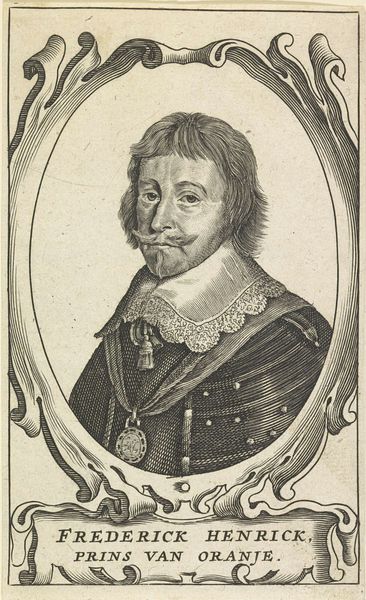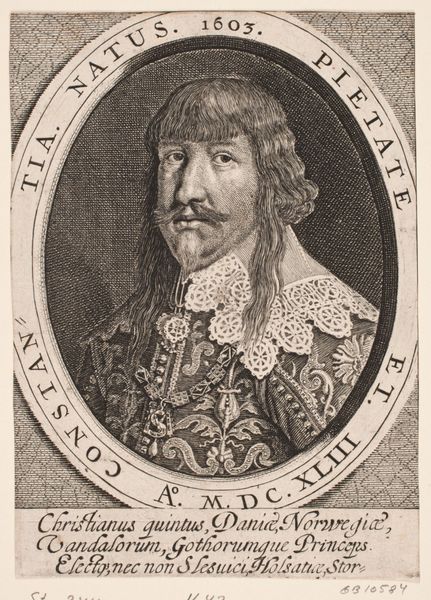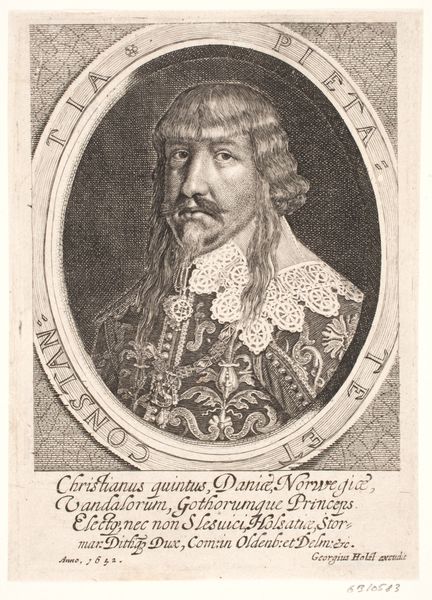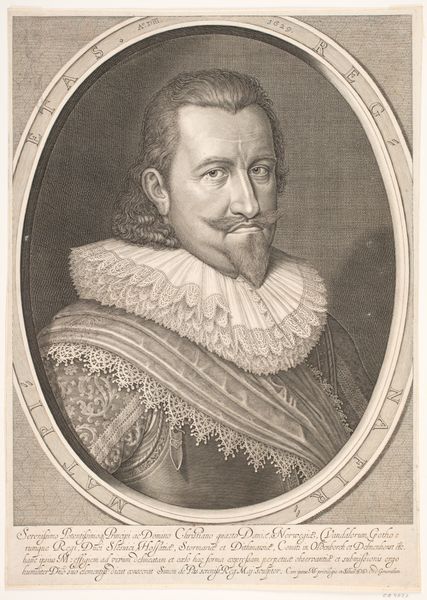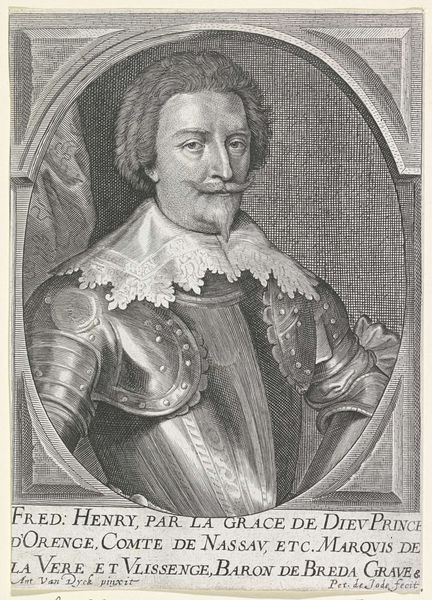
print, engraving
#
portrait
#
baroque
# print
#
figuration
#
line
#
history-painting
#
engraving
Dimensions: 138 mm (height) x 80 mm (width) (bladmaal)
Curator: Standing before us, we have a fascinating portrait, "Christian IV," rendered between 1645 and 1649 by Hans Andreas Greys. It’s a print, specifically an engraving, that resides here at the SMK, the Statens Museum for Kunst. What’s your initial take on it? Editor: Well, there's something immediately melancholy about it, isn’t there? The tight, controlled lines create a sense of... stoicism, perhaps? Almost as if he's a figure being deliberately preserved for posterity. The texture too is almost unnerving—an entire nation reflected on the page, history bearing down on the sitter and us as the viewers. Curator: That's an astute observation. The precision inherent in the engraving certainly lends itself to a sense of meticulousness, even permanence. And you’ve touched on the Baroque qualities of the portrait – its grandeur despite the limitations of the medium, for example. And speaking of preservation, notice the prominent inclusion of text around his head, the almost talismanic nature of this visual and textual framework! Editor: Exactly! It reminds me of how, historically, rulers were often depicted surrounded by symbols of power and legitimacy. That inscription serves a dual purpose. It asserts Christian IV's lineage but also functions like a halo – defining, perhaps even protecting, the divine right he supposedly wielded. Also that tiny elephant hanging on his collar, such a powerful symbol to be used so subtly. It whispers volumes! Curator: The Order of the Elephant! Yes, the detail work is incredible for a print of this size, isn't it? The cross-hatching gives depth to his features and an undeniable presence. Editor: It’s almost claustrophobic, though, don’t you think? All that careful detail packed into such a confined space creates an intensity that’s quite arresting. As if all that weight of history and expectation rests squarely on his shoulders, visible for everyone to see through every delicate line. You sense the weight that’s not shown and a sense of loss—loss of life, of kingdom and glory, now a flat image. Curator: Absolutely, that restrained drama defines this piece. Thank you. Your insightful readings constantly uncover hidden nuances within historical representation! Editor: The past, as you always say, is a foreign country and visual pieces such as this are just glimpses we can have to catch something unspoken of an unfamiliar and irrecoverable world.
Comments
No comments
Be the first to comment and join the conversation on the ultimate creative platform.

